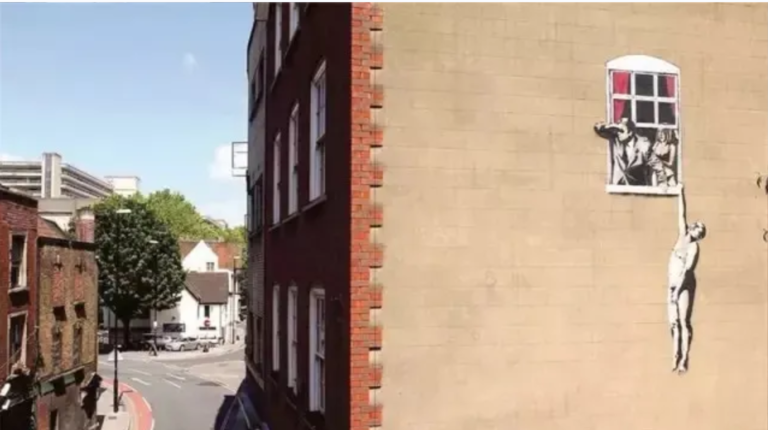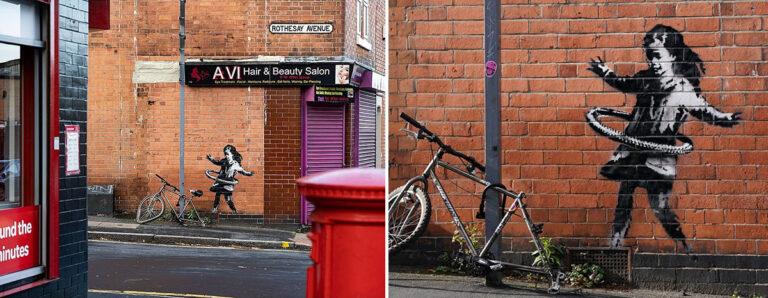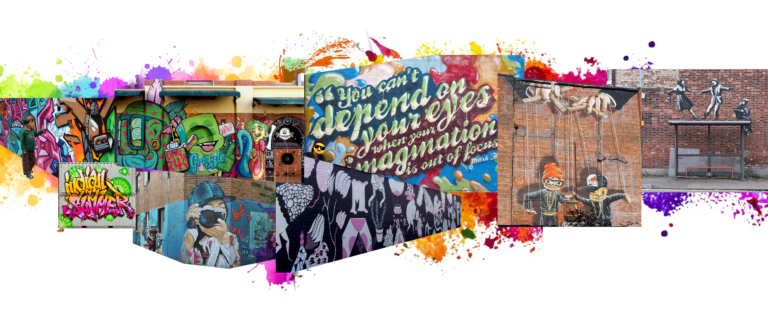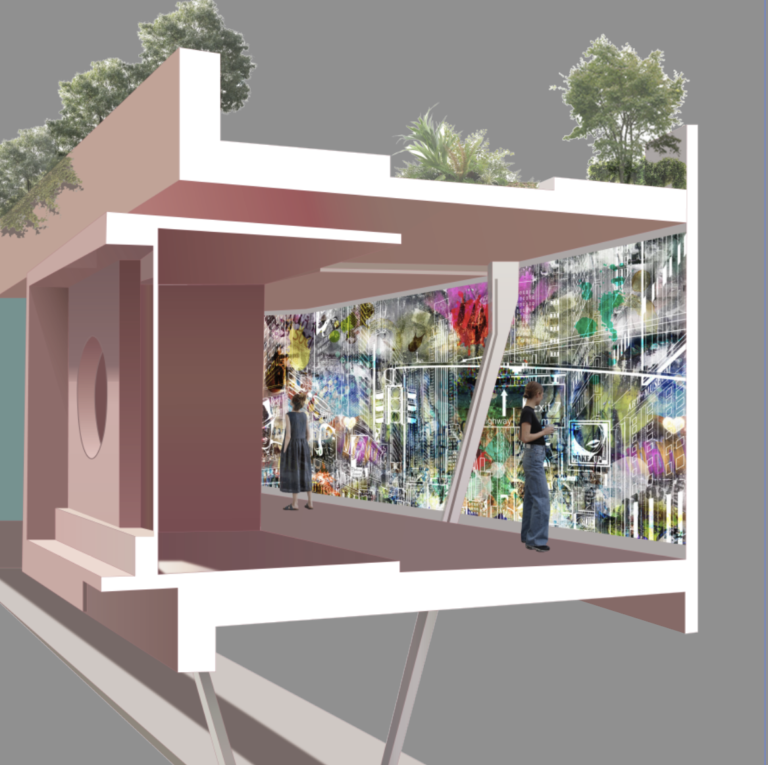Very interesting information in the article my views on the topic are:
Graffiti is a form of street art that has been around for centuries. It is often seen as a form of vandalism, but it can also be used to beautify a city or to make a statement about a social issue.
The author mentions some key points :
Satirical nature of urban graffiti- “Humour is often found in satire. So, what do we mean when we talk about the satirical nature of urban graffiti? In a nutshell, it’s the idea that by poking fun at the everyday aspects of city life, graffiti can help to make life in the city more bearable and even enjoyable.
Interactive nature of urban graffiti-Another great thing about urban graffiti is that it often encourages interaction between strangers. For example, you might see a piece of graffiti that makes you laugh and then start a conversation with the person next to you about it. Or you might see a piece of graffiti that you don’t like and use it as an opportunity to engage in a critical discussion about the state of the city. Either way, urban graffiti can help to break down some of the barriers that can make city life feel so impersonal.
Future thinking- Finally, it’s worth noting that urban graffiti is often about more than just the here and now. Many graffiti artists use their work to comment on social and political issues, to raise awareness about important issues, or to imagine a better future. So, the next time you see a piece of urban graffiti, take a moment to think about what it might be saying about the world around us.” There are a lot of things that the author mentioned in the article which i believe should be highlighted or explained further
My conclusion on the post is: Urban street art is a powerful tool in reflecting the experience of the urban, provoking an engagement of urbanites with their environment, and in re-socialising public spaces. Encounters with urban street art within the everyday create social interstices, opening up ways of seeing and feeling the world
differently; allowing for a creative feedback loop between artist, individual spectator and society. Through the lens of environmentally engaged urban street art, this working paper explores how this artistic and social movement reconnects the natural and social worlds within an increasingly urban existence. By
disconnecting from the world around us, we have forgotten the natural and social entanglements that make up the fabric of the urban context, and in doing so we continue to create irreparable damages to the environment.
https://www.ucl.ac.uk/bartlett/development/sites/bartlett/files/migrated-files/WP_182_Claire_Malaika_T_June_0.pdf
https://www.theguardian.com/cities/2015/jan/07/urban-graffiti-force-good-evil
https://interartive.org/2017/01/street-art-urban-spaces
https://interiorarchitects.com/urban-design-street-art/







Very interesting information in the article my views on the topic are:
Graffiti is a form of street art that has been around for centuries. It is often seen as a form of vandalism, but it can also be used to beautify a city or to make a statement about a social issue.
The author mentions some key points :
Satirical nature of urban graffiti- “Humour is often found in satire. So, what do we mean when we talk about the satirical nature of urban graffiti? In a nutshell, it’s the idea that by poking fun at the everyday aspects of city life, graffiti can help to make life in the city more bearable and even enjoyable.
Interactive nature of urban graffiti-Another great thing about urban graffiti is that it often encourages interaction between strangers. For example, you might see a piece of graffiti that makes you laugh and then start a conversation with the person next to you about it. Or you might see a piece of graffiti that you don’t like and use it as an opportunity to engage in a critical discussion about the state of the city. Either way, urban graffiti can help to break down some of the barriers that can make city life feel so impersonal.
Future thinking- Finally, it’s worth noting that urban graffiti is often about more than just the here and now. Many graffiti artists use their work to comment on social and political issues, to raise awareness about important issues, or to imagine a better future. So, the next time you see a piece of urban graffiti, take a moment to think about what it might be saying about the world around us.” There are a lot of things that the author mentioned in the article which i believe should be highlighted or explained further
My conclusion on the post is: Urban street art is a powerful tool in reflecting the experience of the urban, provoking an engagement of urbanites with their environment, and in re-socialising public spaces. Encounters with urban street art within the everyday create social interstices, opening up ways of seeing and feeling the world
differently; allowing for a creative feedback loop between artist, individual spectator and society. Through the lens of environmentally engaged urban street art, this working paper explores how this artistic and social movement reconnects the natural and social worlds within an increasingly urban existence. By
disconnecting from the world around us, we have forgotten the natural and social entanglements that make up the fabric of the urban context, and in doing so we continue to create irreparable damages to the environment.
https://www.ucl.ac.uk/bartlett/development/sites/bartlett/files/migrated-files/WP_182_Claire_Malaika_T_June_0.pdf
https://www.theguardian.com/cities/2015/jan/07/urban-graffiti-force-good-evil
https://interartive.org/2017/01/street-art-urban-spaces
https://interiorarchitects.com/urban-design-street-art/
This is probably one of the most interesting topics for a post that I have seen here.
In your post, you are considering small Banksy graffiti, which are certainly interesting, but it seems to me that the murals should be mentioned separately as they are different from graffiti. They are responsible for the smooth flow of street art from protest, illegality, social and political statements into an instrument in the processes of gentrification and urban environment change. Indeed, street art became a part of culture in many countries of Europe and America for a long time. It is important to recognise the contribution that artists make to the growth of communities. In addition to bringing new socio-cultural meanings to a community, street art may also foster new economic relationships and elevate the status of “local heirs of art,” or people who live next to the works of art. For instance, in Brazil, artists frequently collaborate with residents of the favelas, most frequently youths. Numerous graffiti and urban art mural festivals, like the Meeting of Favela (MOF) festival in Rio de Janeiro, are hosted in underprivileged areas and draw thousands of artists. One of the goals of these gatherings is to draw attention to the significance of local community participation in determining how their city will function and appear.
In my opinion, it is very important that street art retains a certain identity and depends as little as possible on the government and large companies, since it can easily degrade from the voice of the people into part of an agitation campaign or advertising and remain nothing more than a facade decoration.
Finally, I am delighted to hear that you intend to incorporate this art form into your projects (I am no exception). Furthermore, I encourage everyone, both ordinary people and my colleagues, to pay attention to the role of street art in the urban environment, as it is a type of art with great potential and will be relevant for a long time.
References:
https://www.huffpost.com/entry/meeting-of-favela-rio_b_58756690e4b065be69099021
https://urbact.eu/good-practices/street-art-murals-urban-renewal
https://cooltourspain.com/urban-art-street/